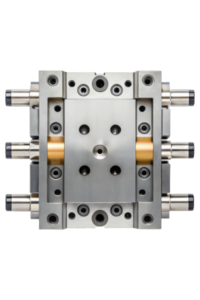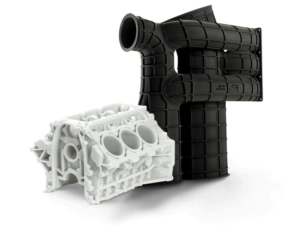Effective low-volume manufacturing is a critical component of modern production processes. It’s often the bridge between prototype development and large-scale production; but also caters to specialized needs, niche markets, and product testing. In this article, we delve into key strategies for optimizing low-volume manufacturing, providing you with insights to achieve superior results and streamline your production processes.
Precision Planning and Design
Before commencing your low-volume manufacturing production process, it’s vital to have a well-structured plan and design. This includes detailed engineering drawings, bill of materials, and product specifications. Investing time in precision planning can significantly reduce errors and delays during manufacturing. Check with your manufacturing partner that they include a design for manufacturability check to eliminate costly errors affecting your first batch.
Material Selection
Choosing the right materials is crucial for low-volume manufacturing. Materials should align with the intended use and design of the product. Consider factors such as durability, cost, and availability. Collaborating with the material experts at your chosen manufacturing partner can provide valuable insights – they will invariably have the expertise in aligning application with material built up from years of experience in the business.
Prototyping and Testing
Prototyping allows you to identify design flaws and functionality issues early in the process. The beauty of additive manufacturing means multiple iterations of your prototype can be produced in one sitting. Rigorous testing during the prototype phase helps ensure that the final product meets quality standards and performs as intended.
Scalable Processes
Confirm your manufacturing partner has a pricing model that is applicable to volume production. Those that have designed manufacturing processes that can be scaled up or down easily will allow you to transition seamlessly from low-volume production to larger runs as demand increases. Remember, not all manufacturing processes are equal – those that have labor intensive finishing requirements, for example, may carry a premium.
Supplier Collaboration
Maintaining strong relationships with suppliers is key to low-volume manufacturing success. Effective communication, reliable deliveries, and quality materials are essential for consistent production.
Quality Assurance
Ensure your manufacturing partner has quality accreditation such as ISO 9001:2015, as this will ensure they implement robust quality control measures throughout the production process. Also ask whether they carry out additional part inspections, testing, and continuous monitoring to maintain product quality.
Time Management
Low-volume manufacturing often requires quick turnaround times. Effective time management is crucial to meeting deadlines and responding promptly to market demands.
Cost Efficiency
Managing costs is a priority in low-volume manufacturing. Focus on cost-effective solutions, minimizing waste, and optimizing resource utilization. A standout approach in this regard is using additive manufacturing, notably 3D printing. One of the distinct advantages of 3D printing is its ability to produce intricate components without the need for traditional tooling.
However, it’s essential to recognize that certain applications may demand specific material properties achievable only through injection molding. In such cases, a cost-effective alternative emerges – low-volume tooling. This approach enables manufacturers to create molds for limited production runs without incurring the substantial expenses of high-volume tooling. By strategically blending additive manufacturing with low-volume tooling, businesses can balance cost efficiency and material versatility, ensuring that each manufacturing method is employed judiciously based on the project’s unique requirements.
This dynamic interplay between 3D printing and low-volume tooling exemplifies the adaptability and cost-conscious nature of modern low-volume manufacturing strategies.
Adaptability
Market conditions and product demands can change rapidly. The ability to adapt to these changes and pivot production processes is a valuable asset in low-volume manufacturing.
In summary, effective low-volume manufacturing requires precision planning, material selection, prototyping, , scalable processes, supplier collaboration, quality assurance, time management, cost efficiency, and adaptability. By following these strategies, you can optimize your low-volume manufacturing processes, achieve superior results, and respond effectively to market demands.


